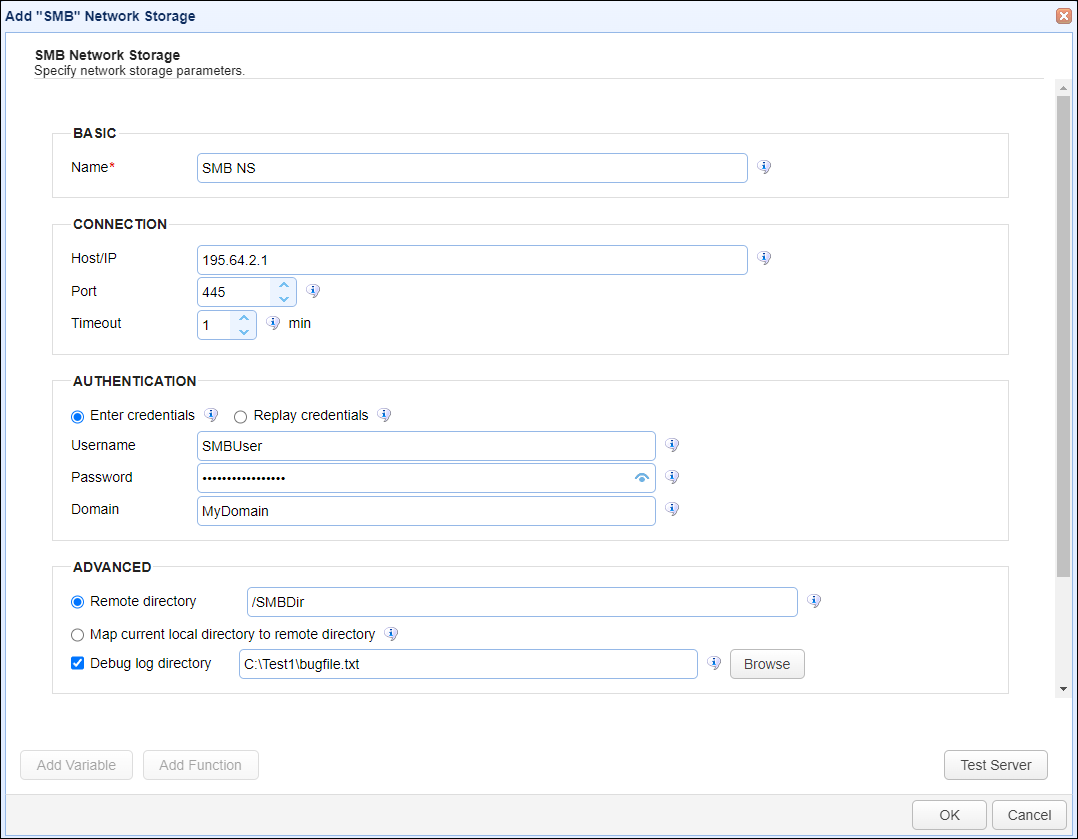SMB network storage
This Network Storage uses an SMB server as additional storage space.
Adding the SMB Network Storage
In the desired domain, navigate to the ACCOUNTS > Network Storage module. Click Add. The Add Network Storage dialog displays. Select SMB as the Protocol, then click OK. The Add "SMB" Network Storage dialog displays as shown in the image below.

Below is a description of the SMB Network Storage fields.
BASIC
Name — Identifies the unique Network Storage name.
CONNECTION
Host/IP — Identifies the remote hostname or IP address of the remote FTP server.
Port — Identifies the port to use when communicating with the remote FTP server.
Timeout — The maximum time (in minutes) for establishing a connection to the remote server.
AUTHENTICATION
Enter credentials — If selected, static credentials are used to connect to the remote FTP server.
-
Username — Identifies the user name that connects to the remote server.
-
Password — Identifies the user name's password.
Replay credentials — If selected, the current user's credentials are used instead of a static Username and Password.
Note: Replay credentials is not supported for users who connect to the MFT Server using SFTP with public key authentication. This option is set on the domain-level inACCOUNTS > Users > Users > Add/Edit > Require public key authentication for SFTP.
Domain — Identifies the Domain name.
ADVANCED
Remote directory — If selected, maps the local virtual path to a specified remote path on the target server.
Map current local directory to remote directory — If selected, maps the local virtual path to a remote path with the same name.
Example: Assume the Network Storage is mapped to a virtual path named /mypath. When connecting to the Network Storage, it will place the user in the /mypath directory on the target server.
Debug log directory — If selected, identifies the directory to store debug files.
TAGS
Tags — If specified, identifies one or more tags used to limit administrator access to the Network Storage.
..